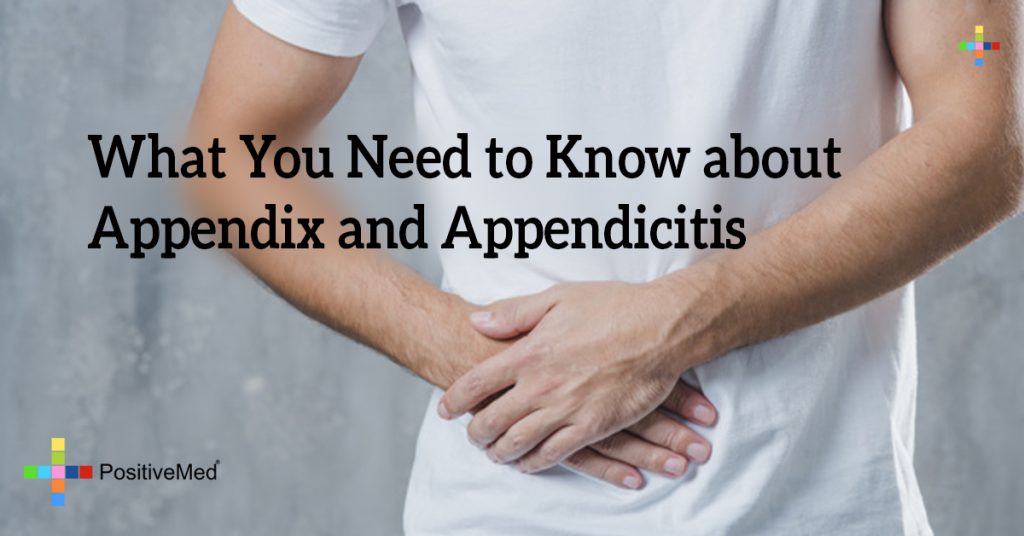
All About the Appendix and Appendicitis
What is the appendix?
The appendix is a small pouch in our body where the large and small intestines meet. It is a thin tube about 4 inches long, part of the human digestive system that sits in the lower right abdomen. Although the exact function is unknown, there is a theory which says that it acts as a storehouse for good bacteria and reboots the digestive system post-diarrheal illnesses. There are no major consequences to living without it.
What is appendicitis?
It’s a condition in which the appendix swells and becomes inflamed. It extends from the intestine and fills with pus. Appendicitis is a medical condition which requires immediate surgery for removing the appendix. If appendicitis is left untreated it can burst, or perforate, which will spill infectious bacteria into the abdominal cavity. This can lead to peritonitis, inflammation of the abdominal cavity’s lining, and it should be treated immediately or it can be fatal.
Appendicitis usually occurs between the ages 10 – 30, but it can affect anyone at any age. It causes pain that starts from the area around your navel then transfers to your lower right abdomen. Appendicitis pain will increase over 12-18 hours and becomes severe.

Sometimes a pus filled infection, called an abscess, occurs outside the inflamed appendix, the scar tissue cuts off the appendix from the rest of the abdomen in order to prevent the spread of infection. An abscessed appendix is not a serious situation but it can’t be diagnosed without surgery, due to which all appendicitis cases are treated as emergencies and require surgery.
In the U.S. 1 in 15 people get appendicitis
Now the question arises what causes appendicitis?
Appendicitis happens when the appendix is blocked by stool, cancer, or any other foreign body. Infection can also cause blockage since the appendix swells up from infection. Per experts, there are 2 likely causes:
1. Infection: this includes stomach infection which can turn into appendicitis through the appendix.
2. Obstruction: a hard piece of stool that traps the appendix, the bacteria present in stool infects the appendix.
Scientists of the University of Calgary, Canada, found a correlation between high pollution levels and occurrence of appendicitis.
Symptoms of Appendicitis:
Initially you can feel pain anywhere in the stomach but later the pain increases and transfers to the lower right abdominal area known as McBurney Point.
Some common symptoms are:
1. Increasing severe pain
2. Pain coughing or sneezing
3. Nausea
4. Vomiting and Diarrhea
5. Inability to pass gas
6. Fever
7. Constipation
8. Loss of appetite
The cure
Appendicitis is usually treated with surgical removal of the appendix and antibiotics therapy. However, if detected early, you can treat it with home remedies:

1. Green gram
This is the most trusted and effective remedy to cure appendicitis. Take 1 tablespoon of green gram three times a day.
2. Garlic
Garlic seems to cure almost every problem. It will help reduce swelling and pain.
3. Cucumber
Juice from cucumber and beetroot with carrot juice twice a day is effective for treating appendicitis. Make a combination of 100 mL cucumber juice and 300 mL beetroot.
4. Wet sheet
To relieve pain you can tie a wet sheet and a dry flannel cloth on your lower abdomen tightly.

5. Stay hydrated
Water is quite essential to treat your appendix. Drink plenty of water everyday and it will help you in keeping your appendix healthy.
6. Buttermilk
Consumption of buttermilk can be effective for treating chronic appendicitis. It helps prevent the growth of bacteria in the appendix.
Constipation can lead to further inflammation of the appendix. Choose a diet full of fiber, healthy fresh fruit and green leafy vegetables, to avoid constipation.
If you are unable to stop vomiting try ginger. You can have ginger juice or eat raw pieces after sprinkling rock salt on them.





